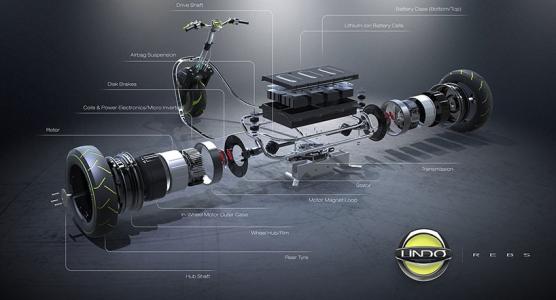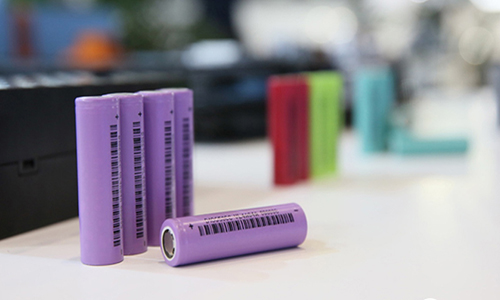What are lithium batteries made of?
May 15, 2019 Pageview:1368
Notebooks, tablets, smart phones ... If today you can count on a multitude of electro-portable devices, much of this mobility is due to a metal that, in addition to its great properties, is also very difficult to be found: lithium. Since its properties of electrical conductivity have been discovered, the metal has been used in the most varied work fronts. For more information please visit https://www.large.net/.
In addition to the portable electronics mentioned above, today lithium-ion (Li-Ion) batteries also house some heavy machinery and various models of motor vehicles. With this expansion of use, the production of the material has also been gaining momentum. Despite this, the demand for the metal may still be greater than supply, after all, the production process of lithium is expensive and time consuming.

What are lithium batteries made of?
The lithium battery has 4 main internal parts, which are:
Anode: composed of graphite, in which the positive charge flows, that is, it receives electrons.
Cathode: composed of cobalt oxide, which would be the negative part, which yields electrons.
Separator: Its function is to separate the cobalt oxide from lithium. Generally, it is composed of a semi permeable material, which lets only one type of element pass - in this case, the lithium ions. Interestingly, the separator is soaked with solvent (usually ether).
Lithium-ion layer is separated from cobalt oxide.
What chemicals are in batteries?
Lithium battery is the generic term for non-rechargeable (primary batteries) and rechargeable (secondary batteries) batteries, in which lithium is used as the active material in the negative electrode. Due to the standard potential of about -3.05 V (the most negative of all elements) and the resulting high cell voltage, as well as the high theoretical capacity of 3.86 Ah / g, lithium is an "ideal" negative electrode material for batteries. However, the high reactivity of elemental lithium (for example, with water or already with humid air) is not unproblematic in the practical implementation. Therefore, only non-aqueous, aprotic electrolyte solutions or solid electrolytes are used in lithium batteries. To increase the conductivity, anhydrous electrolyte salts (such as lithium perchlorate LiClO 4 ) are added.

How are batteries manufactured?
With lithium in hand, specialized companies have the ability to manufacture batteries. This happens in stages. First, lithium is mixed with a kind of paint that gives it the appearance of a sheet of foil after going through all phases. Then it is pressed and passed through several high-power rollers, something like a gigantic printer, which kneads, chops, and sets the metal so that it is passed on. This turns it into a super thin metal blade, less than 0.2 millimeter thick. This metal, at last, is rolled up in the form of reels and goes on to the next step, which is the manufacture of batteries.
These large lithium rollers are divided into tiny coils that vary in size according to the type and size of the battery. There are round alternatives, used in large automotive batteries, and other rectangular ones, present in notebooks, for example. These smaller coils, however, receive several "additives".
Because the lithium is sticky and soft, it needs to be "married" with a roll of propylene film, something that ensures that it will not end up sticking and mingling. If one blade adheres to the other, the metal loses its qualities and the battery becomes unusable.
These rollers, already with anti-scrap protection, return to the winding machines. This time, the number of turns required will depend on the type of battery. One of 3.56 volts, for example, needs 26 revolutions until the battery cell is created. After rolled, it goes to a kind of oven, which causes everything to be vacuum compressed and firm and solid.
With the battery cells produced, robots perform the production of the contacts. Using liquid metal, everything is recorded on its surface, giving "accessibility" to the lithium resources and allowing the electronics to communicate with it. So, everything finally turns into a battery, relying on the movement of ions so your mobile gadget is always up and running.

How do batteries work?
Lithium is a metal whose atoms are composed, among other elements, of three electrons and three protons. It has the characteristic of easily giving up an electron. It then becomes an ion, hence the term Lithium-Ion. The battery comprises one or more accumulators, called cells, each equipped with two electrodes. In many models, the cathode is made of cobalt oxide (CoO2), with some lithium, while the anode is made of graphite. The electrolyte contains Lithium ions in large quantities. The first charge of the cells is made by the battery manufacturer because it initiates the process and causes the lithium ions to accumulate in the anode, thus creating a potential difference between the cathode and the anode.
When you connect the battery to a device, it causes a displacement of the electrons because of the potential difference. The electrons pass from the anode to the cathode by the external circuit, for example the various components of a Smartphone which are then powered. Positively charged lithium ions, on the other hand, leave the anode to return to the cathode because they are attracted by the negative charges of the electrons.
In conclusion, mobile phones, cameras, cordless drills and many other electronic gadgets have one thing in common: they all work with lithium-containing batteries (Li batteries) or lithium batteries. These batteries are small, high-performance power plants with great qualities as highlighted above.
- Prev Article: How to Prolong Life of Lithium Ion Battery?
- Next Article: How to charge 18650 battery?
Leave Message
Hottest Categories
-
Hottest Industry News
-
Latest Industry News









